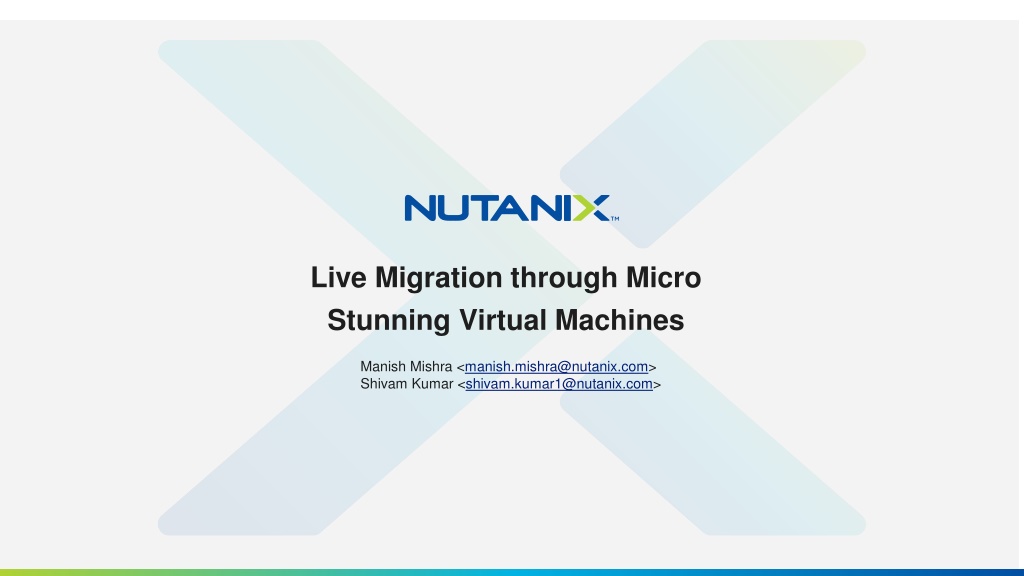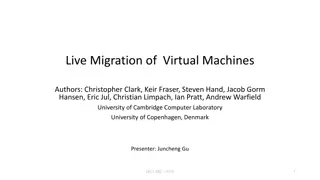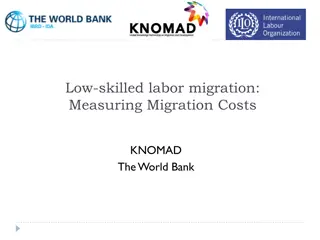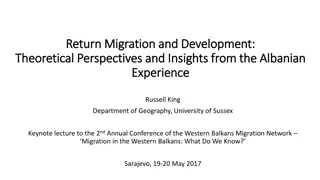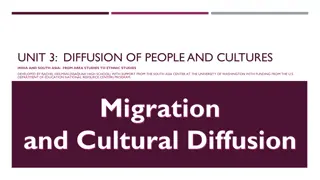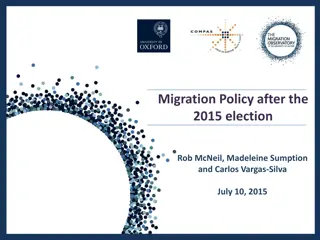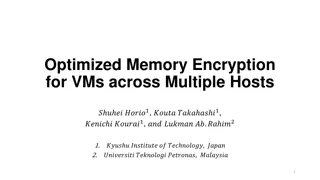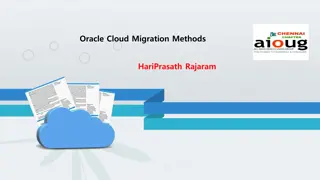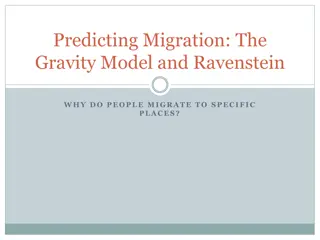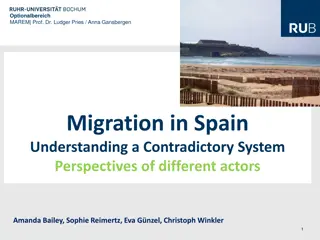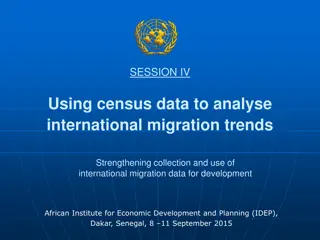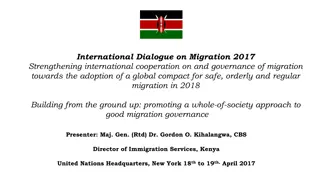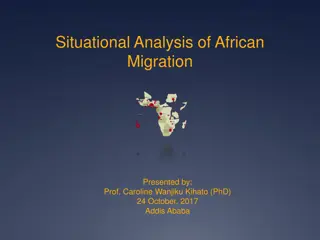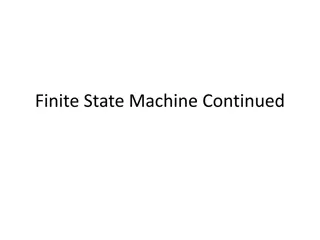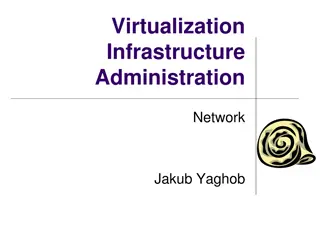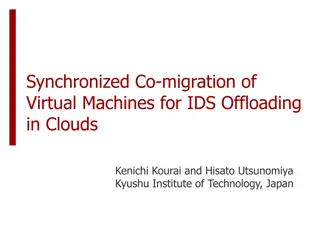Enhancing Live Migration Efficiency in Virtual Machines
Explore the innovative approach of live migration through micro-stunning virtual machines for increased efficiency. Learn about pre-copy migration schemes, reducing dirtying, adaptively micro-stunning VMs, and enforcing limits on dirty rate to optimize the migration process. Dive into the background, design, implementation, and results of this cutting-edge technology.
Download Presentation

Please find below an Image/Link to download the presentation.
The content on the website is provided AS IS for your information and personal use only. It may not be sold, licensed, or shared on other websites without obtaining consent from the author. Download presentation by click this link. If you encounter any issues during the download, it is possible that the publisher has removed the file from their server.
E N D
Presentation Transcript
Live Migration through Micro Stunning Virtual Machines Manish Mishra <manish.mishra@nutanix.com> Shivam Kumar <shivam.kumar1@nutanix.com>
| 2 1 Background 2 Design and Implementation Agenda 3 Results 4 Conclusion and Future Work Live Migration through micro-stunning Virtual Machines
Background | 3 Pre-copy migration scheme One of the popular live migration schemes Can tolerate destination host s failure How to track whether a page got dirtied? Dirty Bitmap Limitations of Standard Pre-copy: Non-converging migrations Long migrations Source Live Migration through micro-stunning Virtual Machines
Background | 4 What would be a straightforward way to reduce dirtying? Sleep the vCPUs for a given percent of time so that process(es) dirtying the memory get less cpu execution time and thus are prevented to dirty more pages Limitations of current throttling logic: Throttles all vCPUs of the VM, read processes unnecessarily penalized. Doesn t converge even with maximum(99%) throttling. No throttling during the bulk phase of migration. Struggles to find the optimal throttle. Time wasted. Migration iteration level granularity. Slow to respond to workload changes. Live Migration through micro-stunning Virtual Machines
Design and Implementation | 5 Until now, pre-copy migration scheme has been about throttling the guest OS unconditionally. From now on, we will adaptively micro-stun VMs. How? - Start with an appropriate limit on dirty rate which can ensure convergence. Dirty Rate Limit = Network Throughput / X 1 2 3 4 5 6 7 8 ... Iter 16GB 16GB/X 16GB/X2 16GB/X3 16GB/X4 16GB/X5 16GB/X6 16GB/X7 ... Copied 16GB/X 16GB/X2 16GB/X3 16GB/X4 16GB/X5 16GB/X6 16GB/X7 16GB/X8 .... Dirtied Live Migration through micro-stunning Virtual Machines
Design and Implementation | 6 Example:A VM with 16GB memory, 1GBps network bandwidth, Dirty rate limited to 0.5GBps 1 2 3 4 5 6 7 8 ... Iter Copied 16GB 8GB 4GB 2GB 1GB 0.5GB 0.25GB 0.125GB ... .5GBps x 16s = 8GB .5GBps x 8s = 4GB .5GBps x 4s = 2GB .5GBps x 2s = 1GB .5GBps x 1s = .5GB .5GBps x .5s = .25GB .5GBps x .25s = .125GB .5GBps x .125s = .0625GB .... Dirtied 16s 8s 4s 2s 1s 500ms 250ms 125ms ... Time How many iterations? -> How much downtime you can afford? Live Migration through micro-stunning Virtual Machines
Design and Implementation | 7 How can we enforce the limit on dirty rate aka Dirty Rate Limit? - Force the VM s average dirty rate to be less than this limit within fixed size time windows. What interval should we choose to limit the average dirty rate? - Smaller time window -> more adaptive throttling. - Smaller time window -> smaller bound on sleep time. - Smaller time window -> better guest performance - Smaller time window -> less accuracy of sleep and reschedule Live Migration through micro-stunning Virtual Machines
Design and Implementation 9 How do we avoid unnecessary throttling of vCPUs? - Selectively throttle vCPUs by enforcing the limit per vCPU. - Limit on number of pages dirtied by individual vCPUs (dirty quota): Dirty Quota = (Dirty Rate Limit x Time Window) / NUM_VCPUS Live Migration through micro-stunning Virtual Machines
Design and Implementation | 10 How do we deal with skewed cases (some vCPUs are just writing, some are just reading)? - - - Quota is added to a common pool if not consumed by the vCPU Common pool is fairly accessible to all vCPUs Common pool can be consumed from only when: - the vCPU has used its dirty quota for the current window - the vCPU needs more quota Live Migration through micro-stunning Virtual Machines
Design and Implementation | 11 Cumulative value of dirty quota Number of pages dirtied by the given vCPU 352 pages? Assume Network Throughput = 220 MBps, NUM_VCPUS = 8 Dirty Rate Limit = Network Throughput / X = 220 MBps / 2 = 110 MBps Dirty Quota = (Dirty Rate Limit x Time Window) / NUM_VCPUS = (110 MBps x 100 ms) / 8 vCPUs = 1408 KB/vCPU = (1408/4) pages/vCPU = 352 pages/vCPU Live Migration through micro-stunning Virtual Machines
Results | 12 n: x; m: y; l: z; b: p; means x threads dirtying y GB of memory at the rate of z MBps and network bandwidth is p MBps Benchmark results for convergence and total migration time Reduced By 56.02% 31.35% 0.26% 42.59% 68.38% 71.63% Live Migration through micro-stunning Virtual Machines
Results | 13 n: x; m: y; l: z; means x threads dirtying y GB of memory at the rate of z MBps Benchmark results for convergence and total migration time Reduced By 0.50% 68.56% 67.55% 63.40% 70.83% Live Migration through micro-stunning Virtual Machines
Results | 14 n: x; m: y; l: z; means x threads dirtying y GB of memory at the rate of z MBps Benchmark results for convergence and total migration time Migration Didn t Migration Didn t Migration Didn t Migration Didn t Converge Converge Converge Converge Live Migration through micro-stunning Virtual Machines
Results | 15 Comparing guest performance in terms of write throughput Scenario VM: 128 GB memory, 32 vCPUs, 128 MBps network bandwidth Workload: Dirtying 62 GiB with 7/16 CPUs (limited at ~3500 MB/s), Reading 62 GiB with 7/16 CPUs (limited at ~3500 MB/s) Live Migration through micro-stunning Virtual Machines
Results | 16 Comparing guest performance in terms of read throughput Scenario VM: 128 GB memory, 32 vCPUs, 128 MBps network bandwidth Workload: Dirtying 62 GiB with 7/16 CPUs (limited at ~3500 MB/s), Reading 62 GiB with 7/16 CPUs (limited at ~3500 MB/s) Live Migration through micro-stunning Virtual Machines
Conclusion | 17 Remarkably improves guest performance during live migration. Significantly reduces total migration time. Ensures convergence in extremely write-intensive workloads. Adaptive to network bandwidth and workload changes. Live Migration through micro-stunning Virtual Machines
Future Work | 18 Migration failure conditions. Merging the code. Optimising the micro-stun. Experiments on real workloads. Predictability. Live Migration through micro-stunning Virtual Machines
Thank you Manish Mishra manish.mishra@nutanix.com Anurag Madnawat anurag.madnawat@nutanix.com Shivam Kumar shivam.kumar1@nutanix.com
